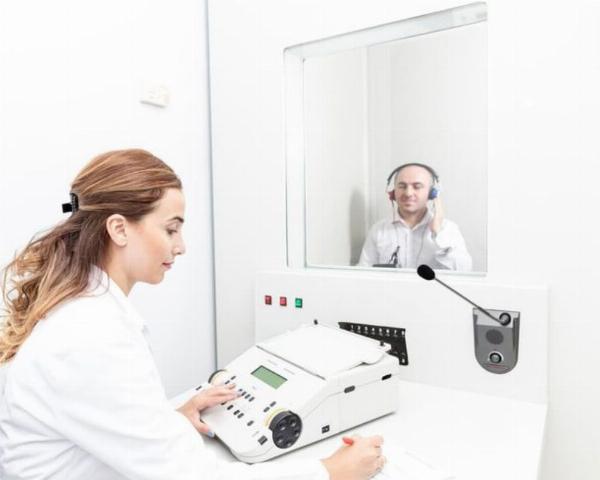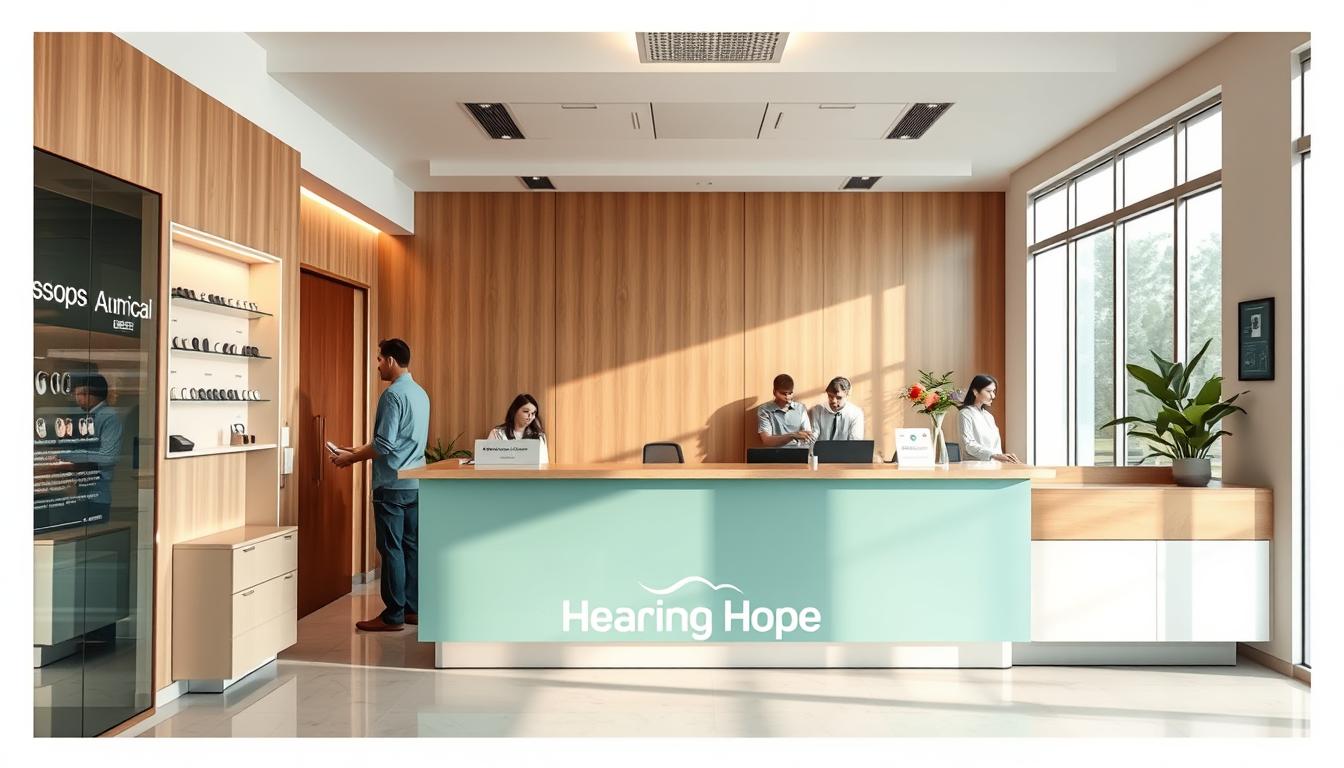How BERA Test Works: A Detailed Explanation in Adults

Strong 8k brings an ultra-HD IPTV experience to your living room and your pocket.
The BERA test has now become an essential tool in adults for diagnosing problems relating to hearing and neurological conditions. The medical term for this test is Brainstem Evoked Response Audiometry, a non-invasive test used to check the auditory pathway from the ear to the brainstem. Though generally used for infants, it is also one of the major diagnostic tests conducted on adults, mainly if other tests related to hearing are inconclusive.
The article shall endeavour to expound on the BERA test by focusing on how it works, its purpose, the procedure involved, and why it is important for adults.
Understanding the BERA Test
What Is the BERA Test?
The BERA test of adults is a kind of auditory brainstem response test, a neurologic test of auditory brainstem function in response to auditory stimuli. The brainstem plays an important role in the central nervous system, acting as the relay station for the auditory signals. When the sound enters the ear, it gets converted into electrical signals by the cochlea, which are then sent to the brainstem. While doing the test, BERA catches those signals, which analyzes the integrity of the auditory pathway.
Why Is the BERA Test Important for Adults?
While BERA is much associated with pediatric care, it is equally important in adults. The main utilization of the BERA test in adults can be stated under the following diagnosing aspects:
Diagnose Hearing Loss: In those cases where regular hearing tests like pure tone audiometry cannot yield efficient results, the BERA test comes in handy to trace impairments in hearing, especially in patients who are uncooperative or unable to communicate well.
Neurological Disorders Detection: The abnormality of the brainstem in responding to the sound may be revealed through a BERA test, which could again hint at some neurological conditions such as an acoustic neuroma-a benign tumour on the auditory nerve, multiple sclerosis, or other pathologies in the brainstem.
Monitoring Auditory Nerve Function: Adults undergoing certain surgeries that may affect the functioning of the auditory nerve should be assisted with the BERA test to monitor the function of the nerve before, during, and after the surgery.
Assess inexplicable signs of hearing: In case of an unexplained loss of hearing, tinnitus, or vertigo in an adult, the cause of this symptom can be traced by the use of BERA test.
How the BERA Test Works
Science Behind BERA Test
The BERA test in adults measures the time taken by sound to go through the ear, passing through the auditory nerve right to the brainstem. In other words, upon reaching the ears, the hair cells in the cochlea convert sound waves into electrical action that travels along the auditory nerve down to the brainstem.
These signals, in turn, are recorded through the BERA test by electrodes placed on the scalp. This electrical activity is picked up as waveforms representing different parts of the auditory pathway. Each peak of the waveform corresponds to a specific anatomical location along the auditory pathway from the cochlea to the brainstem.
The BERA Waveforms
The waveforms produced by the test are the most crucial aspects necessary to interpret the results of the BERA test. A normal test produces a series of five to seven waves labeled I through VII. These correspond to each of them, to a particular point along the auditory pathway. Waves correspond to a certain point in the auditory pathway as below:
Wave I: This is indicative of the auditory nerve.
Wave II: Refers to the cochlear nucleus in the brainstem.
Wave III: Represents activity generated in the superior olivary complex more proximal generation site within the brainstem. Activity generated in the lateral lemniscus, a tract carrying auditory information through the brainstem, is reflected by wave IV. Wave V is the most robust wave and is generated by the inferior colliculus, an important auditory centre within the brainstem.
Waves VI and VII: These are less analyzed but involve further transmission of auditory signals in the brainstem.
The latency and amplitude of these waves are measured so that the integrity of the auditory pathway can be reviewed. The delays or abnormalities of waveform might indicate damage to the auditory nerve or neurological disorders. These are the steps in some detail for a BERA test.
Understanding the procedural aspect of the BERA test in adults will help to eliminate anxiety and enable a person to cooperate with the process without fuss. What to expect during the test includes:
1. Preparation
No Special Preparation Required: Unlike many other tests in medicine, the BERA test does not require special preparation. However, it is recommended to avoid caffeine or any other substance that may interfere with your ability to relax.
Comfortable Clothing: One should wear comfortable clothes, as one needs to remain still during this test.
2. Electrode Placement
Application of Electrodes: Small electrodes will be placed on the scalp by the technician-usually on the forehead, behind the ears, and at times even on the neck. All these electrodes are connected to a computer, which records the various responses of the brain to sound.
Skin Preparation: The skin areas in which the electrodes will be placed are cleaned with a special solution to secure good contact with the skin. 3. Sound Delivery
Earphones: You will be asked to wear a pair of earphones via which a sequence of clicking sounds or tone bursts is played. The sounds will be provided typically in one ear at a time.
Sound Levels: The sounds are of different intensities and frequencies so that the test can determine the responsiveness of various parts of the auditory system.
4. Response Recording
Brain's Response Monitoring: Once the sounds are played, the electrodes record the brain's electrical activity in response to the auditory stimuli. The test does not require any invasion and is painless because it monitors the natural activity of the brain.
Waveform Generation: The computer generates waveforms from the brain's responses and, in turn, prepares them for analysis by the audiologist.
5. Duration of the Test
Length of Test: This test usually lasts between 30 to 60 minutes depending on the number of tests carried out and whether one or both ears are tested.
Still: During the examination, it is very vital to remain still to avoid interfering with the recordings.
6. After the Test
No Recovery Time: There is no need to spend any time in recovery after the BERA test. You can safely resume your normal activities immediately after the test.
Results: Normally, the audiologist or neurologist interprets the results by explaining the findings and prescribing further action if needed.
Understanding the Result of BERA Test
What Does BERA Test Results Mean?
Results from a BERA test for adults are interpreted by analyzing the waveforms that are produced during the test. The main features looked upon include the latency, referring to the timing, and the amplitude, which is the strength of the waves. Here's what the results can indicate:
Normal Results: If the waveforms are produced at expected intervals with normal amplitude, this means the auditory pathway from the ear to the brainstem is functioning normally.
Delayed Waves: Delays in the time taken by some of the waves to appear could indicate a malfunctioning of some sort or another of the pathways that the wave takes, which might also involve blockages or damage to the involved nerve concerned with the transmission of the waves
The absence of certain waves can demonstrate severe hearing loss, dysfunction in the auditory nerve, or neurological disorders related to brainstem involvement.
Asymmetrical Outcomes: If the results are very different between the two ears, this might indicate unilateral hearing loss or a more localized problem such as an acoustic neuroma
Conclusion
An adult BERA test is very powerful in diagnosing and can help identify problems in hearing and neurological conditions. Knowing how it works and what can be obtained from the test helps a patient go for the procedure with assurance and clarity.
Be it unexplained hearing loss, dizzy spells, or other symptoms affecting your auditory system, the BERA test holds all the answers one may seek. Non-invasive in nature, and with accurate, objective results, it is one of the modern healthcare resources doctors just cannot do without.
Note: IndiBlogHub features both user-submitted and editorial content. We do not verify third-party contributions. Read our Disclaimer and Privacy Policyfor details.



